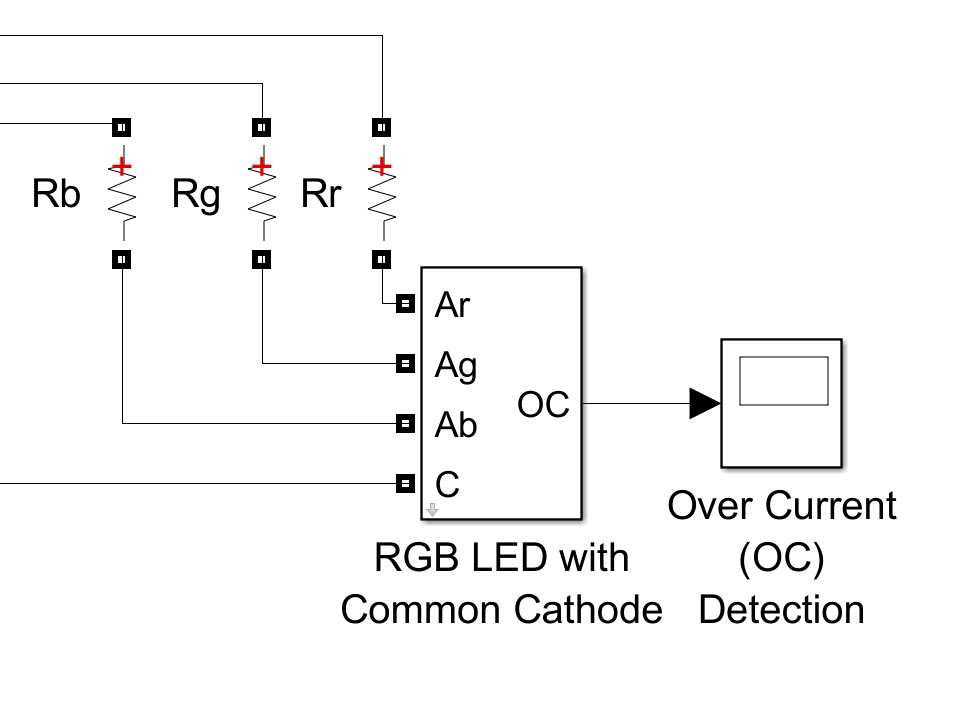An ideal RGB LED with Common Cathode that is implemented using Power System Blocks.

Link: https://www.mathworks.com/matlabcentral/fileexchange/73724-rgb-led-with-common-cathode
Ideal LED means that the intensity of the light is directly proportional to the forward current. However, this is not true in practice.
The over current (OC) detection is included in the model, if all the LED produce 0 OC, this mean that the LED work properly. If the OC produce 1, this mean that the over current occurs and the LED might be broken. The solution is to increase the resistance or reduce the input voltage.
In the setting, there are four thing that needs to be considered.
Forward Voltage:
Different LED color required different forward voltage. Normally, the red LED requires a lower voltage compared to other colors. Check the datasheet of the LED to obtain the forward voltage of each color.
Maximum Forward Current:
When the voltage supply is above the forward voltage, the LED can turned on, the higher the voltage, the higher the current. To ensure the LED work properly, a resistor is added to limit the current. If the current is more than the maximum forward current, the LED will be broken. This maximum forward current can be obtain from the datasheet.
Sample Rate:
This is the time taken for the scope to update the figure.
PWM Switching Frequency:
If the LED receive PWM type input, the switching frequency of the PWM needs to be inserted into the setting.

